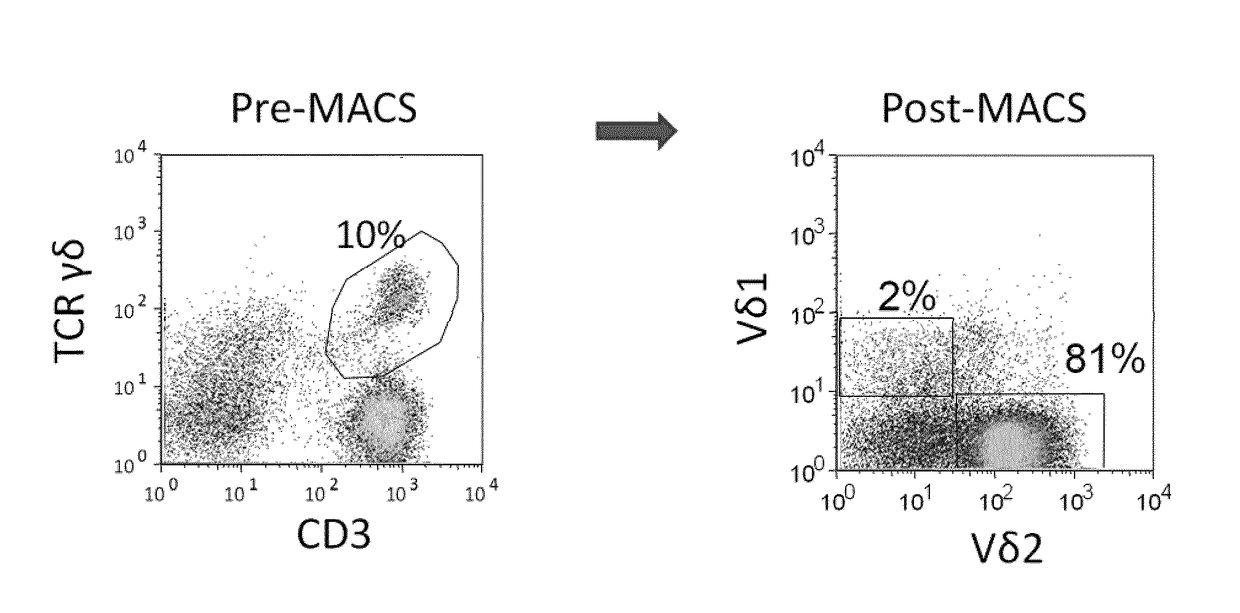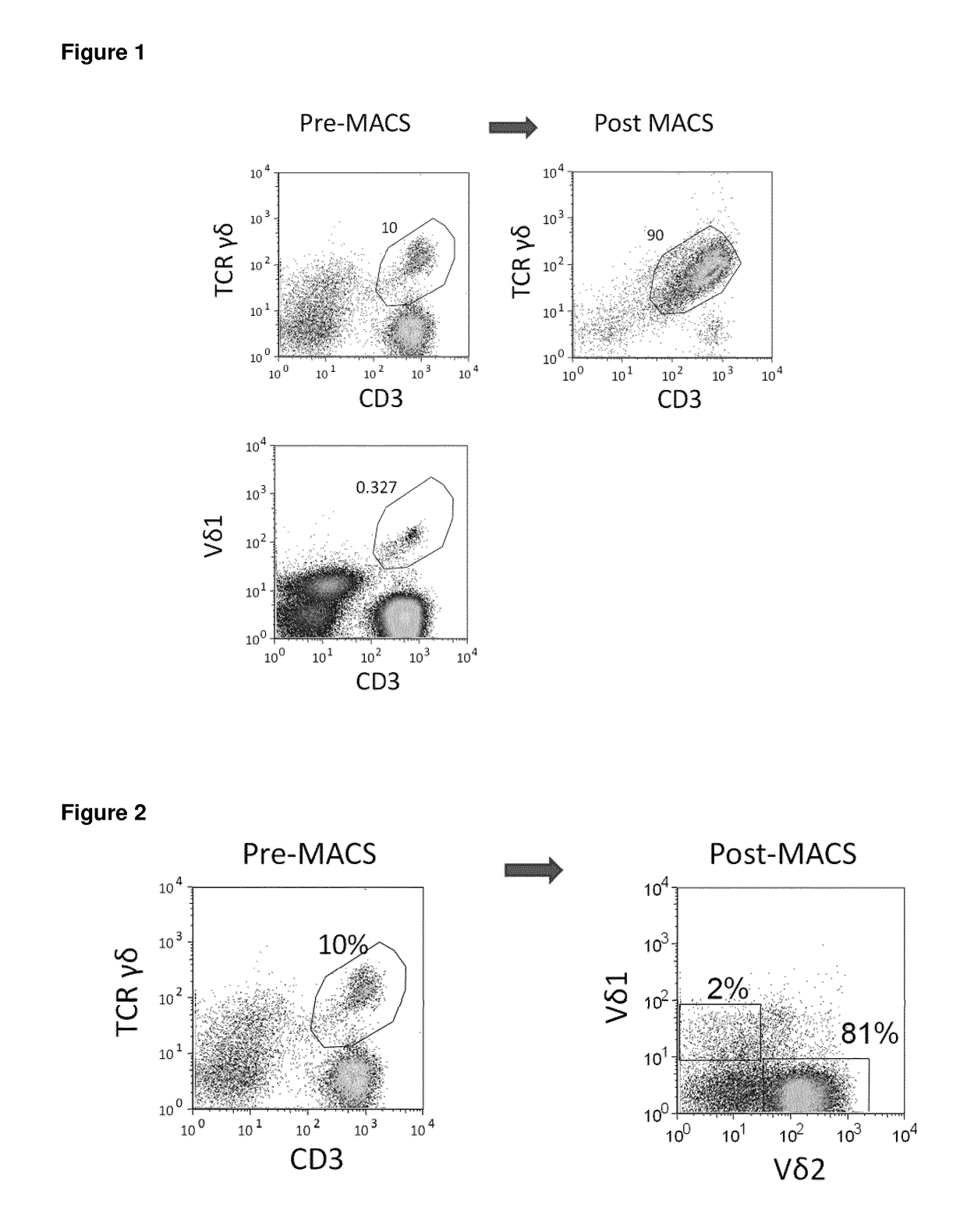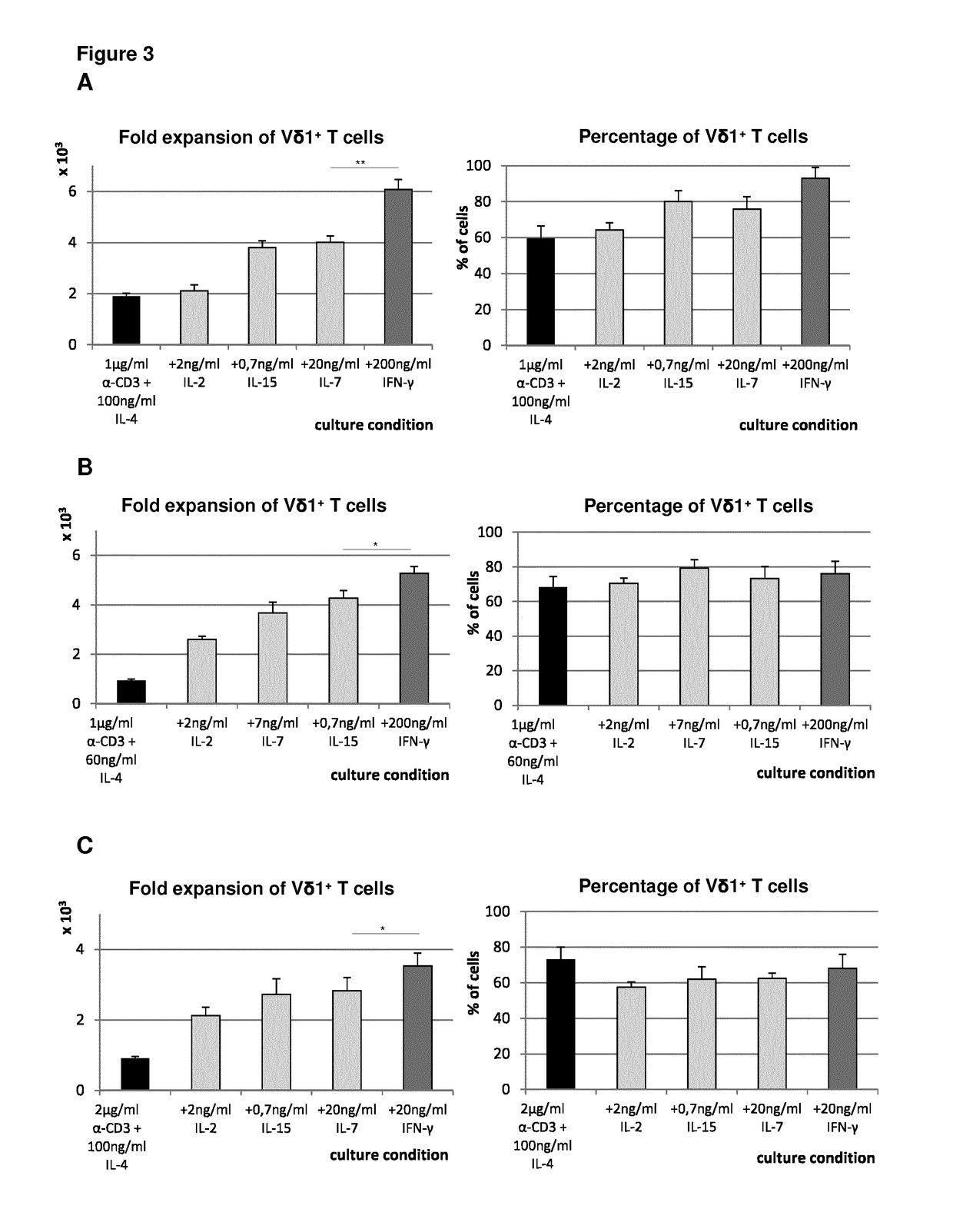Methods for the production of tcr gamma delta + t cells
- Summary
- Abstract
- Description
- Claims
- Application Information
AI Technical Summary
Benefits of technology
Problems solved by technology
Method used
Image
Examples
examples
[0173]Optimization of the Ex-Vivo Expansion of Human Vδ1+ TCRγδ+ T Cells
[0174]The inventors performed a series of experiments aiming to improve the expansion and purity levels of in vitro cultured Vδ2− γδ T cells. Since there was no commercially available antibody against the Vδ3+ chain of the TCR, an anti-TCRVδ1 mAb was used to identify Vδ1+ T cells in cell samples, during the culture optimization stage. TCRγδ+ T PBLs from a panel of healthy donors were isolated by MACS and tested for their reactivity to in vitro stimulation with IL-2 and PHA (i.e., detectable changes in cell activation and proliferation). One donor with reactive Vδ1+ PBLs was selected to provide blood samples for the rest of the optimization study. The preference for a fixed healthy donor was important, since a more reliable comparison could be performed between results obtained in different experiments. The selected donor had a normal (but high) percentage of TCRγδ+ T cells in the peripheral blood (10%-12% of tot...
PUM
| Property | Measurement | Unit |
|---|---|---|
| Fraction | aaaaa | aaaaa |
| Density | aaaaa | aaaaa |
| Density | aaaaa | aaaaa |
Abstract
Description
Claims
Application Information
 Login to View More
Login to View More - R&D
- Intellectual Property
- Life Sciences
- Materials
- Tech Scout
- Unparalleled Data Quality
- Higher Quality Content
- 60% Fewer Hallucinations
Browse by: Latest US Patents, China's latest patents, Technical Efficacy Thesaurus, Application Domain, Technology Topic, Popular Technical Reports.
© 2025 PatSnap. All rights reserved.Legal|Privacy policy|Modern Slavery Act Transparency Statement|Sitemap|About US| Contact US: help@patsnap.com



